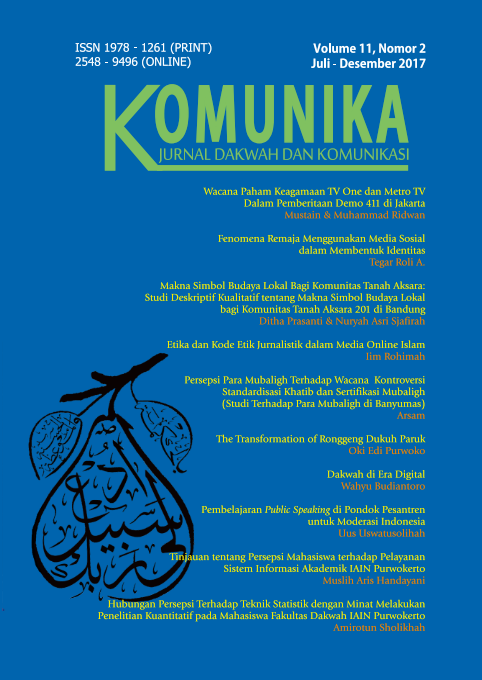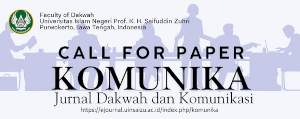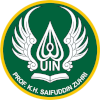Makna Simbol Budaya Lokal Bagi Komunitas Tanah Aksara
Studi Deskriptif Kualitatif tentang Makna Simbol Budaya Lokal bagi Komunitas Tanah Aksara di Bandung
DOI:
https://doi.org/10.24090/komunika.v11i2.1366Keywords:
The Meaning, Local Culture, Community, Tanah AksaraAbstract
In this modern era, as culture evolves into a popular culture mixed with western culture, there is still a community that wants to maintain the tradition of local cultural heritage, in the field of literacy. This is also reflected in a study that will raise researchers this time. The community is called “Tanah Aksaraâ€. Researchers raised research on the Meaning of Local Culture Symbol for “Tanah Aksara†Community in Bandung. “Tanah Aksara†has its own characteristic in Bandung, which upholds the cultural heritage of the local script. They have peculiarities that characterize their identity through the attributes of clothing or other symbols that characterize the main individual in the “Tanah Aksara†community. In this study, researchers used a qualitative approach with qualitative descriptive method. Data collection techniques used were interviews, observation and documentation. Data analysis techniques used are observation persistence, data triangulation, and referential adequacy. Researchers use communication theory to analyze this research is the theory of symbolic interaction. The results of research that has been done by the researcher shows that the meaning of local culture for the Tanah Aksara community include: (1) Symbol as the formation of identity for the Tanah Aksara community; (2) Symbols as preservation of local traditions and cultures for Tanah Aksara communities; (3) Symbols as preservation of the script of the archipelago; (4) Symbols as symbols of ancestral heritage/ ancestors; (5) Symbols as an encouragement of social activities.Downloads
Download data is not yet available.
References
Buku
Ardianto, Elvinaro. (2007). Komunikasi Massa Suatu Pengantar. Bandung: Simbiosa Rekatama Media.
Bungin, Burhan. (2007). Penelitian Kualitatif. Jakarta: Kencana Prenada Media Group Company Profile Komunitas Tanah Aksara. 2016. Bandung
Geertz, H. (1981). Aneka Budaya dan Komunitas di Indonesia. Jakarta: Yayasan Ilmu-Ilmu Sosial.
Martin, Judith dan Thomas K. Nakayama. (2007). Intercultural Communication in Contexts. New York: Mc Graw Hill International.
Mulyana, Deddy. (2008). Metodologi Penelitian Kualitatif. Bandung: PT. Remaja Rosda Karya
Mulyana, Deddy dan Jalaludin Rahmat. (2005). Komunikasi Antarbudaya. PanduanPraktis dengan Orang-orang yang Berbeda Budaya. Bandung: Remaja Rosdakarya.
Liliweri, Alo. (2001). Dasar-Dasar Komunikasi Antarbudaya. Yogyakarta: PustakaPelajar.
Ogden, C.K. dan I.A. Richards. (1946). The meaning of meaning. New York: Harcourt, Brace & World, Inc.
Rakhmat, Jalaludin. (2009). Metode Penelitian Komunikasi. Bandung: PT Remaja Rosda Karya.
Soekmono. (1998). Pengantar Sejarah Kebudayaan Indonesia I. Yogyakarta: PT Kanisius.
Sugiyono. (1998). Metode Penelitian Kuantitatif, Kuantitatif dan R&D. Bandung: Alfabeta.
West, Richard. Lynn H.Turner. (2008). Pengantar Teori Komunikasi. Jakarta: Salemba Humanika.
Jurnal
Efiandri. (2010). “Konstruksi Makna Simbol Dalam Komunikasi Sosialâ€. Retrieved Juni 2016 (https://elfiandrisahabat.files.wordpress.com/2016/01/konstruksi-makna-simbol-publikasikan-lpp-uin-07.pdf)
Pahlevi, Reza. (2012). “Konstruksi Makna Tato pada Anggota Komunitas “Paguyuban Tattoo Bandungâ€. Retrieved Juni 2017.(http://mkp.fisip.unair.ac.id/index.php?option=com_content&view=article&id=119:memahami-teorikonstruksi-sosial&catid=34:mkp&Itemid=61).
Ardianto, Elvinaro. (2007). Komunikasi Massa Suatu Pengantar. Bandung: Simbiosa Rekatama Media.
Bungin, Burhan. (2007). Penelitian Kualitatif. Jakarta: Kencana Prenada Media Group Company Profile Komunitas Tanah Aksara. 2016. Bandung
Geertz, H. (1981). Aneka Budaya dan Komunitas di Indonesia. Jakarta: Yayasan Ilmu-Ilmu Sosial.
Martin, Judith dan Thomas K. Nakayama. (2007). Intercultural Communication in Contexts. New York: Mc Graw Hill International.
Mulyana, Deddy. (2008). Metodologi Penelitian Kualitatif. Bandung: PT. Remaja Rosda Karya
Mulyana, Deddy dan Jalaludin Rahmat. (2005). Komunikasi Antarbudaya. PanduanPraktis dengan Orang-orang yang Berbeda Budaya. Bandung: Remaja Rosdakarya.
Liliweri, Alo. (2001). Dasar-Dasar Komunikasi Antarbudaya. Yogyakarta: PustakaPelajar.
Ogden, C.K. dan I.A. Richards. (1946). The meaning of meaning. New York: Harcourt, Brace & World, Inc.
Rakhmat, Jalaludin. (2009). Metode Penelitian Komunikasi. Bandung: PT Remaja Rosda Karya.
Soekmono. (1998). Pengantar Sejarah Kebudayaan Indonesia I. Yogyakarta: PT Kanisius.
Sugiyono. (1998). Metode Penelitian Kuantitatif, Kuantitatif dan R&D. Bandung: Alfabeta.
West, Richard. Lynn H.Turner. (2008). Pengantar Teori Komunikasi. Jakarta: Salemba Humanika.
Jurnal
Efiandri. (2010). “Konstruksi Makna Simbol Dalam Komunikasi Sosialâ€. Retrieved Juni 2016 (https://elfiandrisahabat.files.wordpress.com/2016/01/konstruksi-makna-simbol-publikasikan-lpp-uin-07.pdf)
Pahlevi, Reza. (2012). “Konstruksi Makna Tato pada Anggota Komunitas “Paguyuban Tattoo Bandungâ€. Retrieved Juni 2017.(http://mkp.fisip.unair.ac.id/index.php?option=com_content&view=article&id=119:memahami-teorikonstruksi-sosial&catid=34:mkp&Itemid=61).
Downloads
Published
2018-04-13
Issue
Section
Articles
License
Authors who publish with this journal agree to the following terms:
- Authors retain copyright and grant the journal right of first publication with the work simultaneously licensed under a Creative Commons Attribution-ShareAlike 4.0 International License that allows others to share the work with an acknowledgement of the work's authorship and initial publication in this journal.
- Authors are able to enter into separate, additional contractual arrangements for the non-exclusive distribution of the journal's published version of the work (e.g., post it to an institutional repository or publish it in a book), with an acknowledgement of its initial publication in this journal.
- Authors are permitted and encouraged to post their work online (e.g., in institutional repositories or on their website) prior to and during the submission process, as it can lead to productive exchanges, as well as earlier and greater citation of published work (See The Effect of Open Access).

























